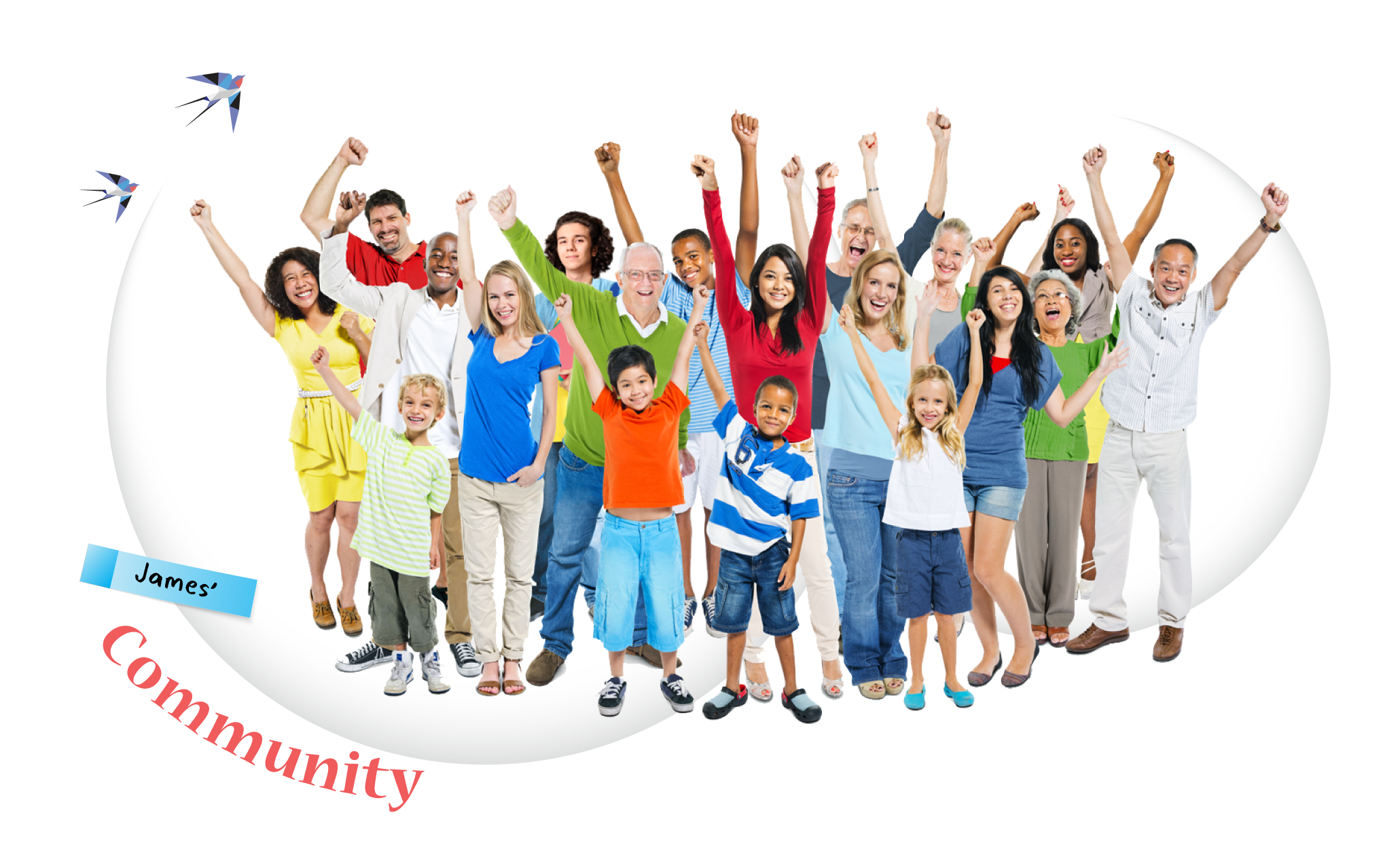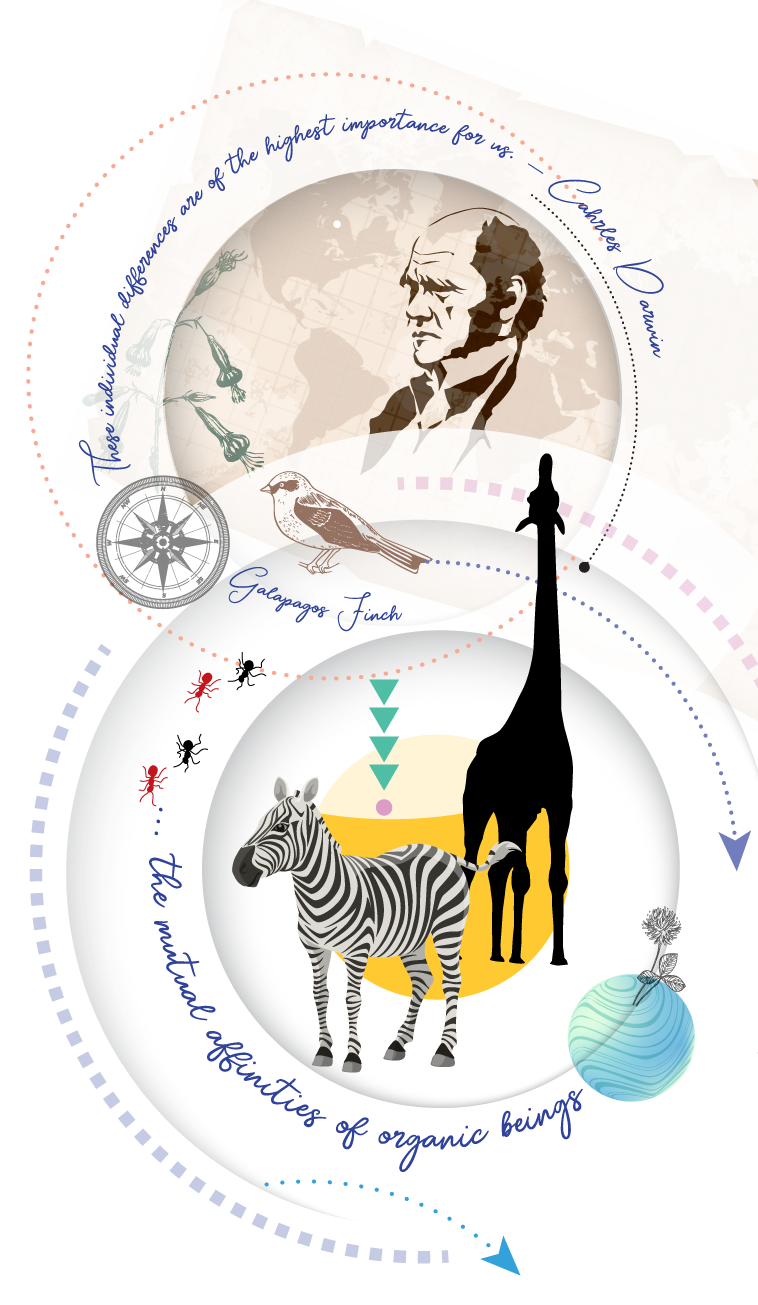Individual Differences
We owe Charles Darwin for his theory of evolution and establishing a place for the man who could no longer be regarded as ‘a being apart from the rest of nature,’ but as one among many species of the natural world. The fact of evolution is ‘no longer in need of further proof.’ As well as natural selection is now established as an underlying mechanism of evolution.1 The principles of genetics have been discovered and sophisticated physiological processes understood.
And yet, the more people know about themselves, the more they treat themselves as uniform mechanistic systems of natural elements. It is like saying: ‘Yes, we are composed off the bits and pieces from the natural world, but what is happening with those bits and pieces in our body-machines is coded more or less uniformly within our DNA.’
Each one of us is a human unit evaluated against the average standard for achieving self-optimization and heightened efficiency.
But what is interesting is that in his concept of natural selection, Darwin identified ‘individual differences’ as an attribute ‘of the highest importance’ in the evolution of species.2
He wrote: ‘… it follows that any being, if it vary however slightly in any manner profitable to itself, under the complex and sometimes varying conditions of life, will have a better chance of surviving, and thus be naturally selected.’3
Throughout the pages of this website, we have established that the contemporary conditions of life are alike the ones Darwin described.
The word, as specified in R@W, has the 3Cs characteristics: complex, changeable and extremely competitive.
One may argue that knowing standards in such conditions may be actually a useful thing. In R@W, we don’t argue with this. But what we are rising concern about is the component that is missing from its consideration. That is what Darwin believed to be ‘of the highest importance’—individual differences.
Individual Differences
How can an individual learner, based on his or her individual differences, use the knowledge of standards to build on and succeed in unpredictable, volatile and ubiquitous conditions of life?
Ripples@Work is a model that creates learning conditions for an individual to:
- test the knowledge and skills they have within the scope of their individual differences, that can be interests, curiosity, concerns, imagination, intuition, and/or places or objects of their liking;
- discover and trial their authentic individual differences —not what they have been told by parents or teachers and adopted without questioning;
- trial their individual differences in the context of the complex, changeable and competitive—3Cs surroundings and see in which way and how those individual differences can benefit them;
- design a blueprint for further development of their personal roadmap of knowledge and skills based on their individual differences.
Affinity
Darwin paid special attention to the nature of affinity among species, ‘the wonder of which we are apt to overlook.’ He believed that all animals and all plants are related to each other in a sophisticated patterns of groups and classes, not in a linear order, but through ‘the complex action of natural selection […] clustered in round points.’ [5]
In R@W, we believe that every individual has his or her own affinity spaces where people share a common interest and employ similar tools. The idea of affinity learning spaces is borrowed from a psycholinguist, James Paul Gee.
In R@W, it is synced with Darwin’s idea of affinity to groups. Integrated into such a manner affinity spaces are found by the learner outside of his or her learning group.
For example, James (in the diagram below) is working on a learning group project of finding an efficient way to get to school together with four other students. His individual interest drives him to the area of biomimicry—solving problems by borrowing ideas from plants and animals.
In pursuing his interest, James finds social media group, where people are working on their own projects but share the same interest in biomimicry. They discuss and share their experiences around their interest and working with particular tools while working on their own projects. In this way, being engaged in his group project, James brings and shares new knowledge with his teammates working on the same project.
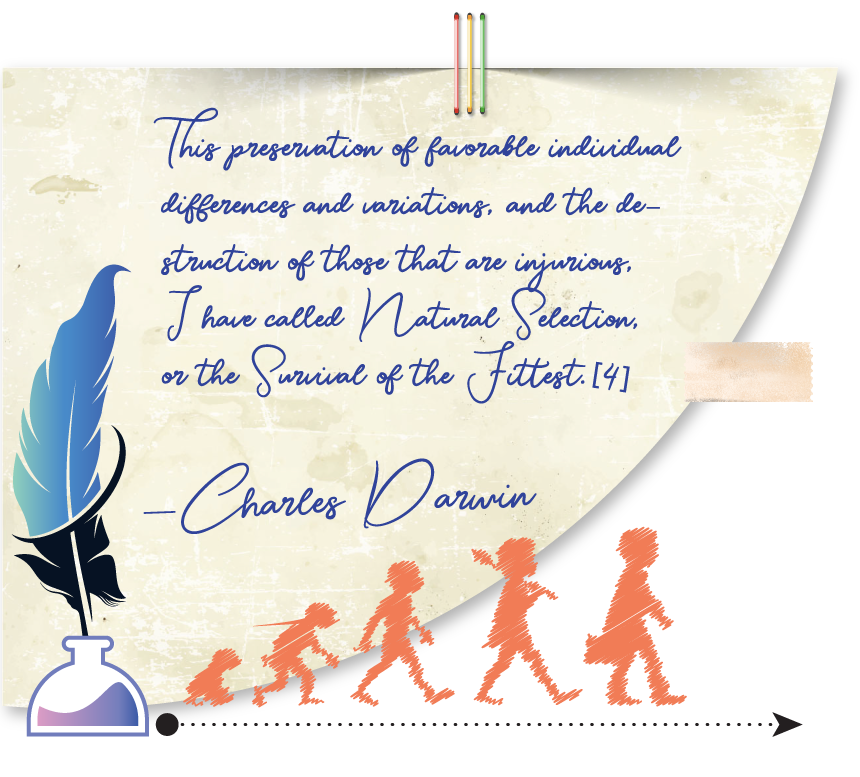
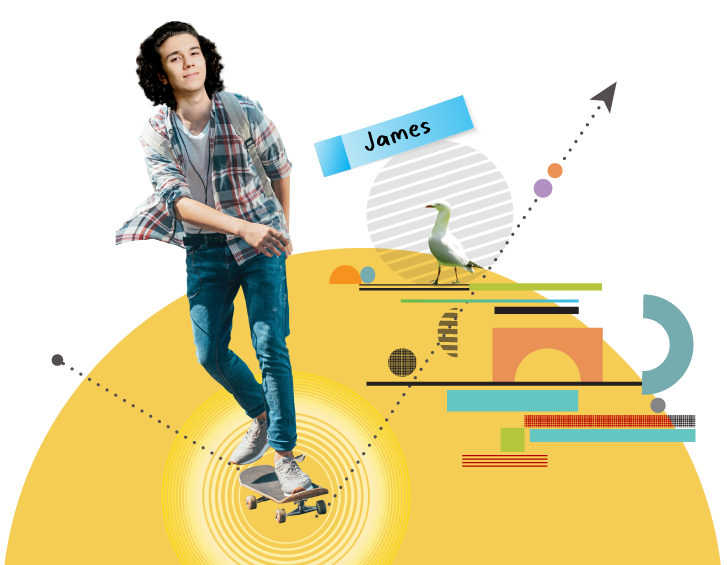
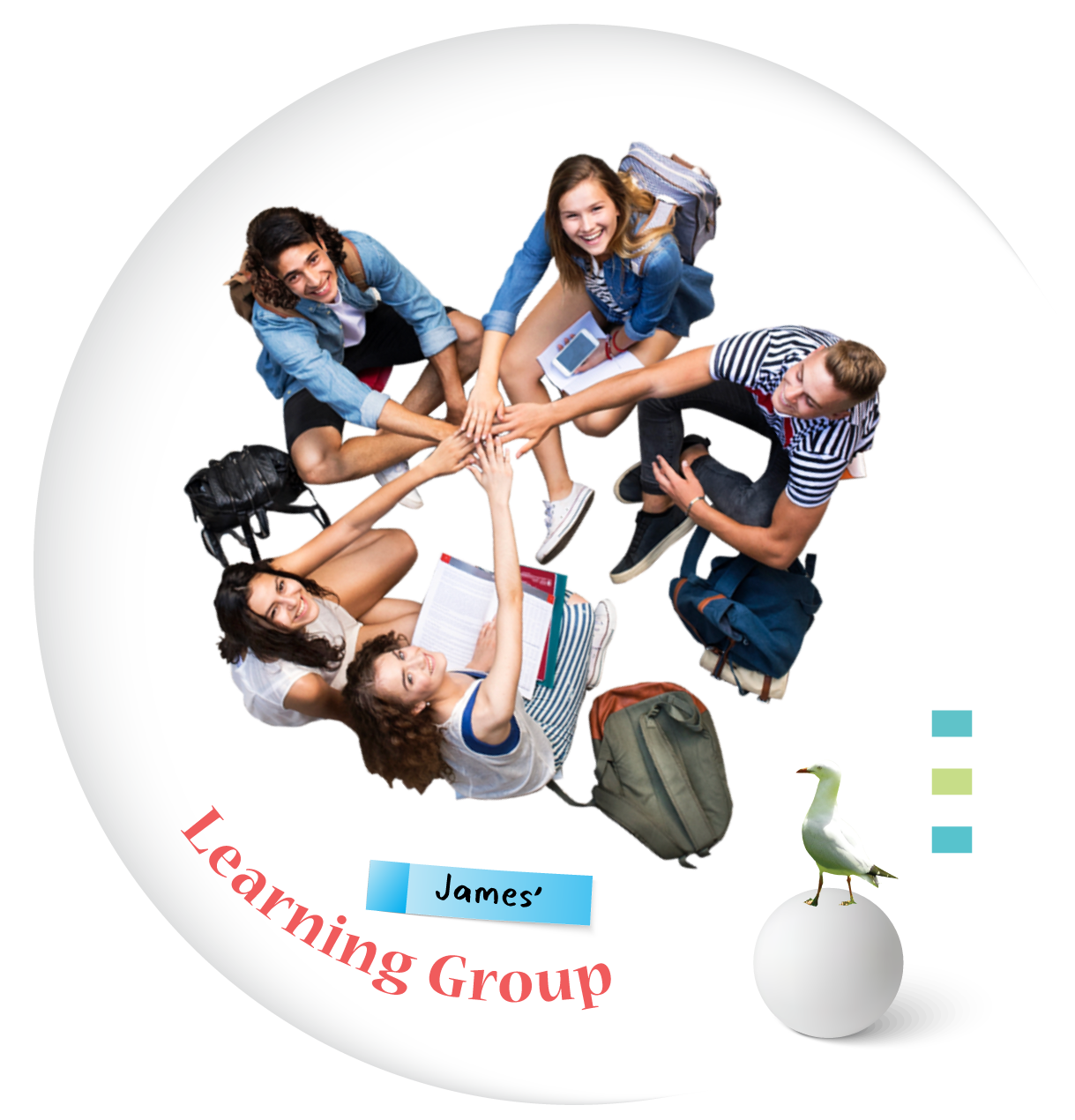
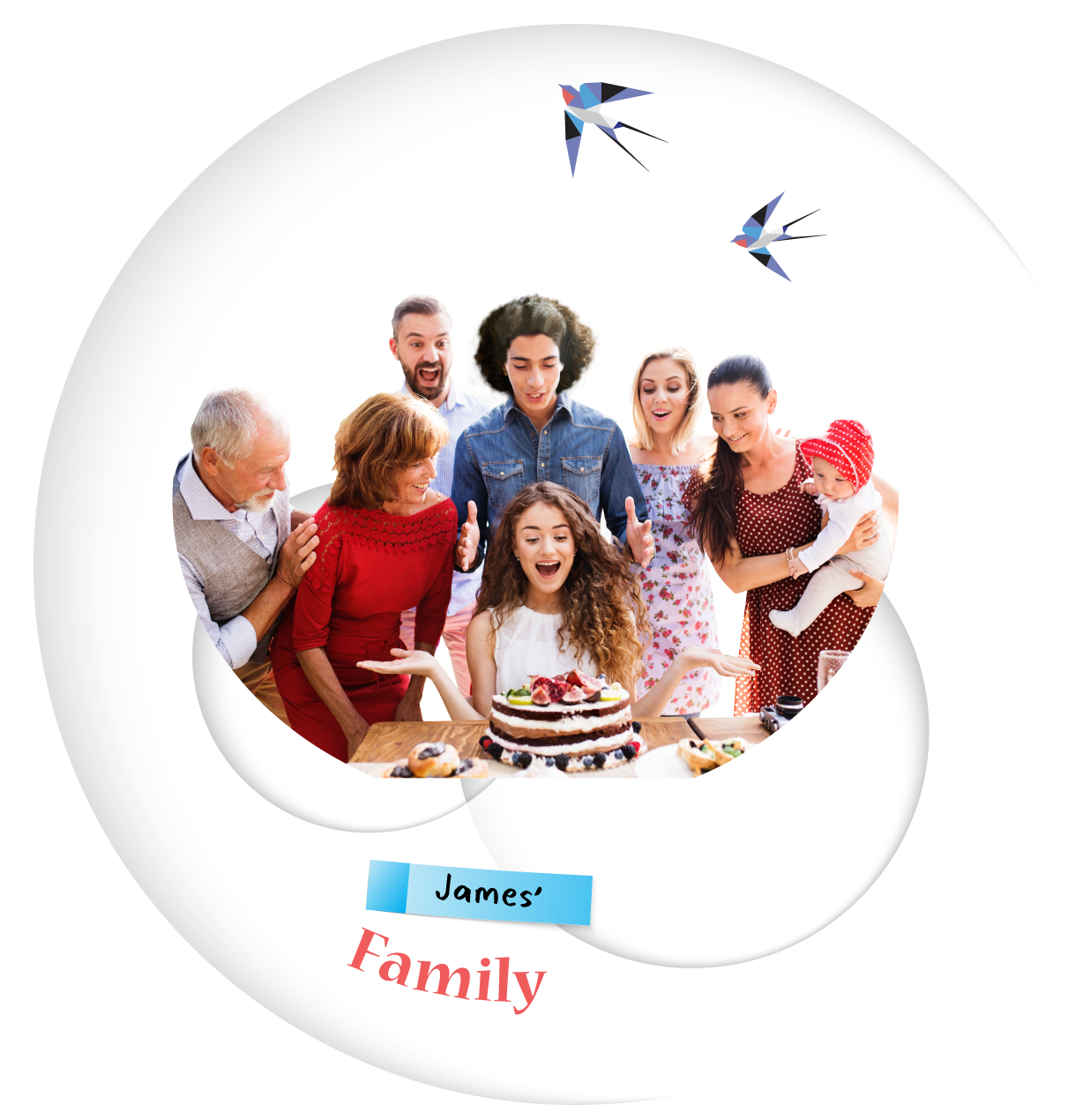
In such a way, James, being engaged in the group learning project, becomes a center of his own individual ripplework. Apart from the social media environment, he can find his affinity space within his local community, friends, or family.
What is important here is that James gains recognition of his individual differences and priorities among other people and learns that he can relate to others in the areas of his uniqueness. This means that he can find understanding and support. He can also be valued within the groups because of the support and knowledge he shares with others.
Affinity spaces are one of the R@W mechanisms for the individual to build his or her confidence about something that is different in them and use this different element for maximizing their communication and collaboration skills and for learning how to use this trait(s) in a beneficial way.
